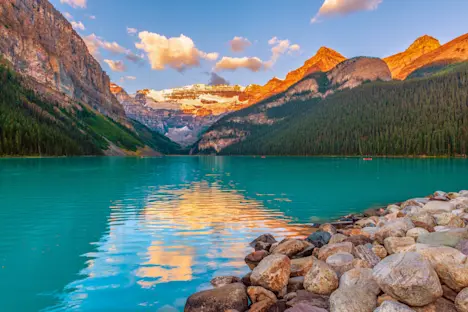
The 2024 global temperature, which was 2.63 degrees Fahrenheit above the preindustrial (1850–1900) average, was the highest ever recorded. And the 10 warmest years on record have all occurred in the last decade. The long-term temperature goal of the Paris Agreement is in grave danger.
July 22, 2024, was the hottest day on record, according to a recent NASA analysis of global daily temperature data. And 2024 has now officially taken over the title of hottest year on record from the former titleholder, 2023. This unprecedented heat is likely to lead to the next mass extinction—the sixth—akin to when the dinosaurs died out, 66 million years ago.
Unfortunately, it’s not only the heat that we’re dealing with today. “Hydroclimate whiplash”—a new term being used to describe rapid swings between intensely wet and dangerously dry weather—has increased globally due to climate change, with further large jumps expected as warming continues.
July 2024 also brought the release of the blockbuster film Twisters (centered around a social-media celebrity storm-chaser), which demonstrates an ongoing public fascination with extreme weather and its hazards. That box office boon that is said to have revived the disaster movie genre left behind in the 1990s and early 2000s comes at a time of ever-improving cell-phone cameras and streaming technologies that have made it easier for people like you and me to collect and share real-time, dramatic storm footage, often resulting in high viewer numbers. What makes us want to watch these images of catastrophe?
This is our climate, 2025.

The record-breaking temperatures of 2024 are part of a long-term warming trend driven by human activities, primarily the emission of greenhouse gases. In the United States, the largest source of greenhouse gas emissions is from burning fossil fuels for electricity, heat and transportation.
Extreme heat will likely wipe out most mammals—including us
On January 10, 2025, NASA (along with other scientific organizations, including the National Oceanic and Atmospheric Administration) confirmed that 2024 was the hottest year since recordkeeping began in 1850. And July 22, 2024, was the hottest day on record. July 21 and 23, 2024, also exceeded the previous daily record, set in July 2023. And it was recently shown that even allowing for natural climate variations over hundreds of years, 2023 was still the hottest summer since the height of the Roman Empire, meaning 2023 was the hottest summer in 2,000 years. These temperatures are part of a long-term warming trend driven by human activities, primarily the emission of greenhouse gases.
Now, the first-ever supercomputer climate models simulating humidity, rain, temperature and wind trends for the supercontinent expected to form in the next 250 million years—called “Pangea Ultima”—demonstrate how climate extremes will dramatically intensify when the world’s continents eventually merge to form one, hot, dry and largely uninhabitable supercontinent, say researchers from England’s University of Bristol in a paper published in the science journal Nature Geoscience in September 2023.
The findings project how these high temperatures are set to further increase as the sun becomes brighter, emitting more energy and warming the Earth. Tectonic processes, occurring in the Earth’s crust and resulting in supercontinent formation, would also lead to more frequent volcanic eruptions, which produce huge releases of carbon dioxide into the atmosphere, further warming the planet.

Mammals—such as musk ox—have adapted to the cold by various means, such as growing thicker fur. But while mammals have evolved to lower their cold-temperature survivable limit, their upper-temperature tolerance has mostly remained constant, making excessive heat harder to overcome.
Mammals, including humans, have survived historically thanks to their abilities to adjust to the variables in their environments, especially through adaptations such as fur and hibernating in the cold, as well as short spells of warm-weather hibernation. But while mammals have evolved to lower their cold-temperature survivable limit, their upper-temperature tolerance has generally remained constant. This makes exposure to prolonged excessive heat much harder to overcome; and the climate simulations, if realized, would ultimately prove unendurable.
This newly emerged supercontinent, then, would effectively create a triple whammy: the continentality effect, a hotter sun (anticipated to emit about 2.5% more radiation) and more CO2 in the atmosphere. The result will be a mostly hot, hostile environment, devoid of food and water sources for mammals.
Widespread temperatures of between 104 to 122 degrees Fahrenheit and even greater daily extremes, compounded by high levels of humidity, would ultimately seal our fate. Humans—along with many other species—would expire due to their inability to shed this heat through sweat, cooling their bodies.

Whether a world is hospitable for humans could depend on if the continents are spread out or in one, large supercontinent. This is a model of the forming of Pangaea Ultima, Earth’s next supercontinent. Light Blue=Shallow Sea. Orange=Mountains. Yellow=Landmass. Medium Blue=Deep Ocean. ©Cgboeree, Wikimedia Commons
Although human-induced climate change (and its resultant global warming) is likely to be a growing cause of heat stress and mortality in some regions, research suggests the planet should largely remain habitable until this seismic landmass change in the far future. But when Pangea Ultima forms, findings indicate only somewhere between 8% and 16% of land will be habitable for mammals.
To estimate the future level of CO2, the University of Bristol team used models of biology, ocean chemistry and tectonic plate movements to map out inputs and outputs of CO2. They determined that CO2 could rise from around 420 parts per million (ppm) today to more than 600 ppm many millions of years in the future.
This assumes, though, that humans will stop burning fossil fuels; otherwise, those numbers will be reached much, much sooner.

The whiplash sequence in California has increased fire risk in two ways: first, by greatly increasing the growth of flammable brush and grass in the months leading up to fire season, and then by drying it out to exceptionally high levels.
Hydroclimate whiplash is everywhere on our warming Earth
Today, it isn’t only heat that climate change is exacerbating. Los Angeles is burning, and hydroclimate whiplash is the key climate connection.
In the winter of 2022–2023, after years of severe drought, dozens of atmospheric rivers (long, narrow bands of water vapor in the atmosphere) deluged California with record-breaking precipitation, burying mountain towns in snow, flooding valleys with rain and snowmelt, and setting off hundreds of landslides. Following a second exceptionally wet winter in the first months of 2024 in the southern parts of the state—resulting in abundant brush and grass—the rest of that year brought a record-hot summer and now a record-dry start to the 2025 rainy season, along with tinder-dry vegetation that has since burned in a series of damaging wildfires.
In a paper published in January 2025 in the journal Nature Reviews Earth and Environment, climate scientists at the University of California, Los Angeles, say this is just the most recent example of the kind of hydroclimate whiplash that is increasing worldwide.

Many previous studies of climate whiplash have only considered the precipitation side of the equation and not the growing evaporative demand. A thirstier atmosphere pulls more water out of plants and soil, exacerbating drought conditions beyond simple lack of rainfall.
Weather records show hydroclimate whiplash has swelled globally by 31% to 66% since the mid-20th century—even more than climate models suggest should have happened. The same potentially conservative climate models project that the whiplash will more than double if global temperatures rise 3 degrees Celsius above preindustrial levels. The world is already poised to blast past the Paris Agreement’s targeted limit of 1.5 degrees Celsius (2.7 degrees Fahrenheit).
The global consequences of hydroclimate whiplash include not only droughts and floods, but the heightened danger of whipsawing between the two, including the bloom-and-burn cycle of overwatered then overdried brush, and landslides on oversaturated hillsides where recent fires removed plants with roots that knit the soil and slurp up rainfall. Every fraction of a degree of warming speeds the growing destructive power of the transitions.
Anthropogenic climate change is not only the culprit behind the accelerating whiplash but a key driver of the “expanding atmospheric sponge,” the growing ability of the atmosphere to evaporate, absorb and release 7% more water for every degree Celsius the planet warms, the researchers say. The problem is that the sponge grows exponentially, like compound interest in a bank. As with hydroclimate whiplash, the rate of expansion increases with each fraction of a degree of warming. This expanding atmospheric sponge effect offers a unifying explanation for some of the most visible, visceral impacts of climate change that recently seem to have accelerated.

After years of severe drought, dozens of atmospheric rivers deluged California with record-breaking rain in the winter of 2022–2023. This buried mountain towns in snow, flooding valleys with rain and snowmelt, and setting off hundreds of landslides.
In California, although winds were fanning the extreme fires, it’s the whiplash-driven lack of rain that suspended Southern California in fire season. Climate change is increasing the overlap between severely dry vegetation conditions later in the season and the occurrence of wind events. This, ultimately, is the key climate change connection to Southern California wildfires. Hydroclimate whiplash is projected to increase most across northern Africa, northern Eurasia, the Middle East, South Asia, the tropical Atlantic and the tropical Pacific, but most other regions will also feel the shift.
Under a high-warming scenario, California will see an increase in both the wettest and driest years and seasons by later this century. But the less warming there is, the less of an increase in hydroclimate whiplash. So, anything that would reduce the amount of warming from climate change will directly slow or reduce the increase in whiplash. Yet we are currently still on a path to experience between 2 degrees and 3 degrees Celsius of global warming this century, so substantial further increases in whiplash are likely in our future.
Support through streaming
In a fascinating insight into human behavior that has previously been unexplored, researchers from England’s University of Plymouth have analyzed what might be motivating people to watch video streams of our increasing extreme weather events—in some instances for up to 12 hours at a time.

Hurricane Irma had maximum sustained winds of 185 miles per hour at its peak in the Atlantic Ocean, which it maintained for over 35 hours. It was one of the strongest storms on record in the Atlantic Basin, as well as the longest-lived storm of that intensity anywhere in the satellite era.
The research, published in the journal Environmental Hazards, focused on nine live streams of Hurricane Irma in 2017 and Hurricane Ian and storms Dudley, Eunice and Franklin in 2022, which broadcast a total of 65 hours of video footage watched by more than 1.8 million people. Many of the streams were already existing webcam channels that were repurposed during the hurricane or storm, such as those that streamed beach or port conditions. In some instances, affected people streamed live footage from their own doorbell or house-security cameras. During that time, more than 14,300 comments were left by 5,000 unique accounts, a reflection of the fact that footage focused on unfolding events of global or national importance generate higher-than-normal audience engagement.
Through a detailed analysis of viewers’ comments, it was found that people in affected areas were using streams to discuss official government risk advice they had received—for example, about whether to evacuate. Others were drawn to the streams because they had a previous connection to the affected region.
For these people, watching live footage—which included taking time to share messages of hope that the hurricane or storm would pass without destruction—was a way of showing support to people and places impacted by the event.

Live streams of extreme weather events provide an opportunity for people in, close to and far away from the event to interact in real time. The footage becomes an online gathering point to share experiences of similar events and to show support.
When dramatic things happen—whether it’s a volcano erupting or a tornado—people flock to watch. You might assume that this is just a form of online rubbernecking and that people are naturally drawn to spectacular sights. However, this study shows that the reasons for watching extreme weather footage are more complex. Live streams provide the opportunity for people in, close to and far away from the event to interact in real time. People use the footage to check their understanding of how significant the event is, to make sense of hazard risks and as an online gathering point to share experiences of similar events. The research also demonstrates that people are keen to learn more about the science behind what is happening.
The researchers conclude that although scientists are getting better at communicating risk, people are far more likely to discuss hazards in informal and relatively unmoderated settings. Moments of extreme weather focus attention and generate discussion about hazards, how they work and how they will increasingly affect us in future. New digital practices—such as live streaming—are thus important for us to understand because they’re not just spaces for disaster voyeurism. Rather, they’re places for community, emotional support and learning in a world that can feel increasingly volatile.
Mismatch between the world we live in and the climate we created
During the next four years, it will be vitally important that we not lose sight of our current climate crisis, which is a result of human emissions of greenhouse gases. While it’s predicted that in 250 million years we’ll have an uninhabitable planet, today we are already experiencing excessive heat that is detrimental to human health. We need to know and fiercely believe that climate change is not only about what’s happening to polar bears on ice fields somewhere or what might happen to your grandchild in 50 years. It’s about your life and the risks to it now, in very personal and direct ways.

We need to learn that we are simply not prepared for the climate that we have created. The built world will have to be adapted to the climate that we now live in and that which science tells us to expect in the near future.
Perhaps the biggest lesson that we need to learn is that we are simply not prepared for the climate that we have created. Our world was not built for the climate that we now live in, and we need to acknowledge that fact.
That’s why it’s crucial to reach net-zero emissions—or dare I hope, climate positive ones—as soon as possible. We’ve waited far too long.
Here’s to finding your true places and natural habitats,
Candy


































